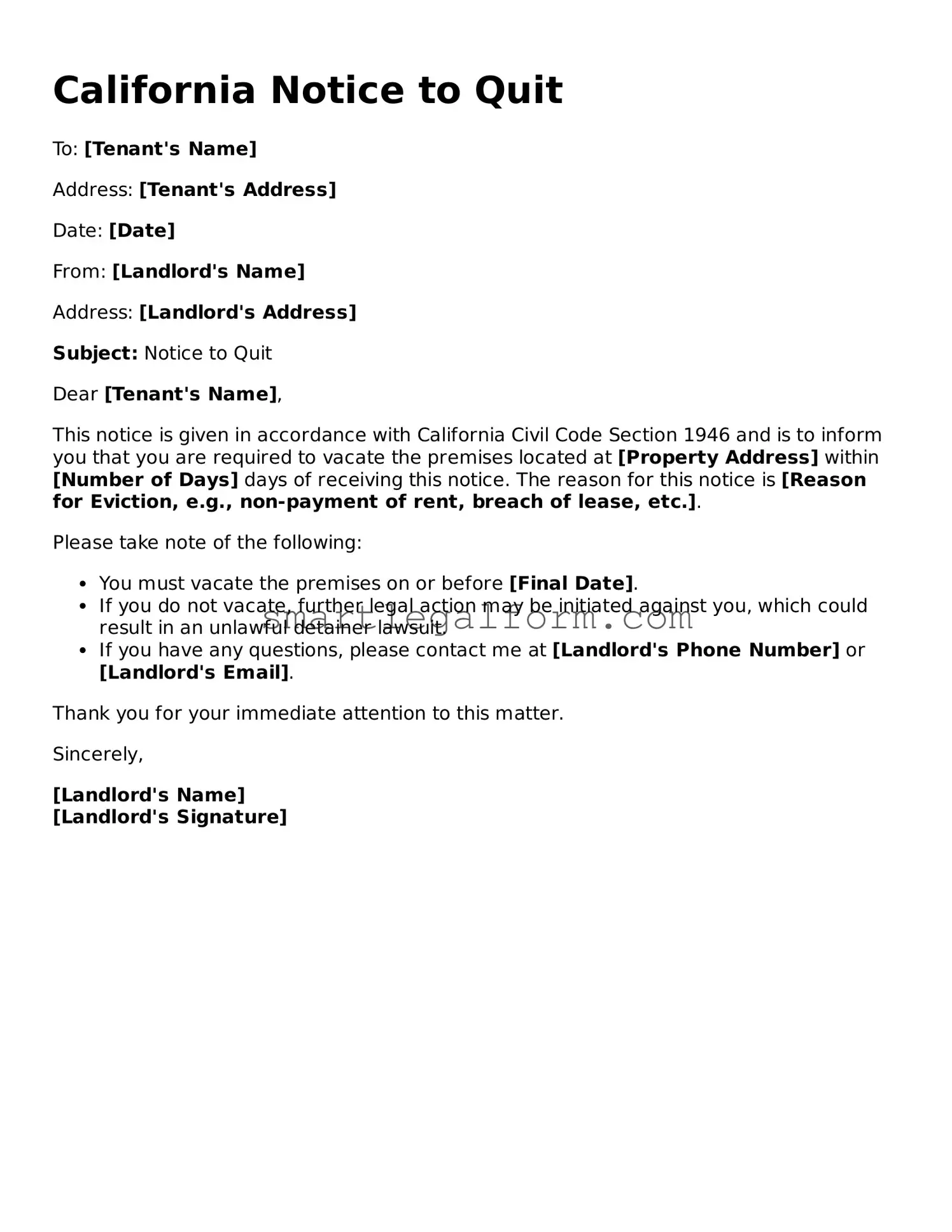Printable California Notice to Quit Document
The California Notice to Quit form is a legal document that landlords use to inform tenants that they must vacate the rental property. This notice serves as a crucial step in the eviction process, providing tenants with a clear timeline and reason for their departure. Understanding how to properly fill out this form is essential for both landlords and tenants to ensure compliance with state laws.
Ready to take the next step? Fill out the form by clicking the button below.
Fill Out Your Form Online
